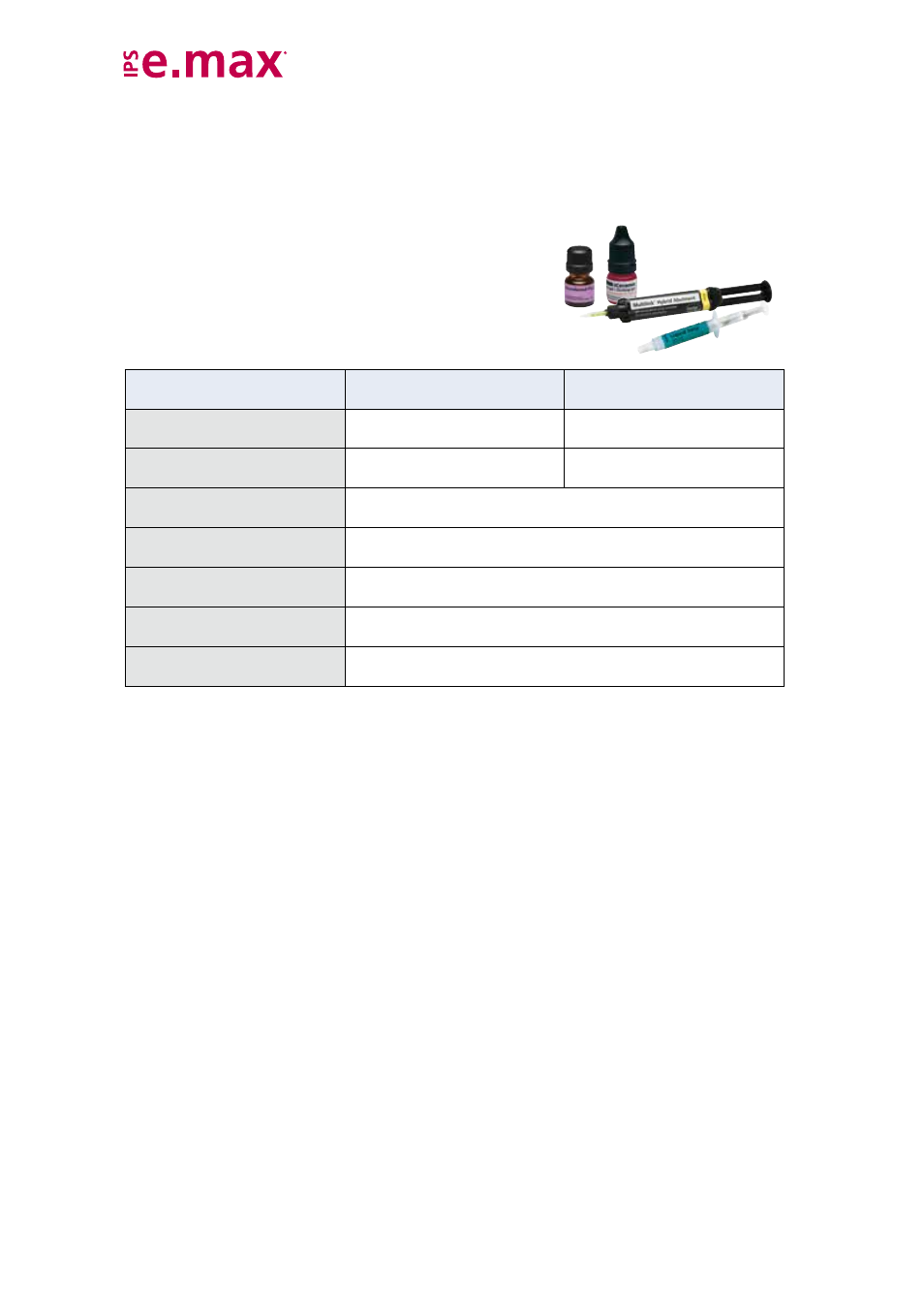Cad abutment solutions, Permanent cementation of base / ceramic structure – Ivoclar Vivadent IPS e.max CAD Abutment Solutions User Manual
Page 46

Careful preparation of the bonding surface is a prerequisite for the successful adhesive cementation of the base and the
ceramic structure. The following paragraphs outline the required procedure. The procedure is the same for hybrid
abutments and hybrid abutment crowns.
Required materials
– IPS Ceramic Etching Gel
– Monobond
®
Plus
– Multilink
®
Hybrid Abutment
– Glyceringel (z.B. Liquid Strip)
IPS e.max CAD ceramic structure
(LS
2
)
Base
Blasting
–
According to the instructions of the
manufacturer
Etching
Bonding area to the base
with IPS
®
Ceramic Etching Gel for 20 s
–
Conditioning
The bonding area
with Monobond
®
Plus for 60 s
Adhesive cementation
Multilink
®
Hybrid Abutment
Covering the cementation joint
Glycerine gel, e.g. Liquid Strip
Curing
7 minutes auto-polymerization
Polishing the cementation joint
Conventional polishers for ceramic/composite resin
Preparation of the Ti base
The following procedure should be observed in the preparation of the Ti base for the cementation with the ceramic
structure:
– The Ti base should be prepared according to the instructions of the manufacturer.
– Clean the Ti base with an ultrasonic bath or with a steam cleaner and then dry it with blown air.
– Screw the Ti base on the model analog.
– Place the ceramic structure on the Ti base and mark the relative position of the components with a waterproof pen. This
facilitates locating the correct position when the parts are assembled at a later stage.
– The emergence profile of the base must not be blasted or modified in any way.
– If the manufacturer recommends that the bonding surface of the Ti base be blasted, the following procedure
should be observed:
– Apply silicone (Virtual Extra Light Body Fast Set) to protect the emergence profile and the screw channel .
– Carefully blast the bonding area according to the instructions of the manufacturer.
– Remove silicone.
– Clean the Ti base with ultrasound in a water bath or with the steam jet.
– After cleaning, the bonding surface must not be contaminated under any circumstances, as this would impair the
bond.
– Apply Monobond Plus on the clean bonding surface and allow it to react for 60 s. After the reaction time, disperse any
residue with air that is free of water and oil.
– Seal the screw channel with a foam pellet or wax. The bonding surface must not be contaminated in the process.
46
CAD Abutment Solutions
Permanent cementation of base / ceramic structure
